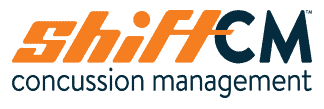Autonomic Nervous System Rehabilitation
Manual Treatment and Orthopedic Rehabilitation
Headaches, dizziness, eye pain, sleep difficulties, and mood challenges are common symptoms post-concussion, but did you know that these symptoms can also arise following injury of the neck? The traumatic forces required to cause injury to structures at the neck (including muscles, joints, ligaments, discs, etc.) have been shown to be significantly less than the forces required to produce concussion. That means, if you’ve sustained a concussion, chances are, you’ve also sustained a neck injury. If that is the case, there is a high likelihood that some of your symptoms are being driven by this region, making it important to address your neck as part of a global rehabilitation strategy. Our healthcare providers utilize a variety of treatment approaches to rehabilitate neck pain, whiplash, and other associated orthopedic complaints including:
- Soft tissue release techniques, massage therapy
- Joint mobilization or manipulation
- Acupuncture
- Craniosacral therapy, osteopathic manual therapy
- Strength, stability and proprioceptive training plans
Treatment may be delivered by one or several of our Healthcare Providers based on your needs as well as your preferences.
Aerobic Exercise Training
In some concussion sufferers, exercise becomes a symptom trigger. This is largely thought to be related to an underlying dysregulation of the autonomic nervous system. As the name suggests, the autonomic or “automatic” system helps regulate important, basic bodily functions such as blood pressure, heart rate, cerebral blood flow, temperature, digestive processes, and more. When the “central control” of this system, which is housed in the brainstem, is affected post-concussion, individuals may experience symptom exacerbation during physical exercise. For example, taking your dog for a walk may increase your headache or cause you to feel light headed. Other symptoms associated with autonomic dysregulation include challenges with mood and cognition.
There are two branches within the autonomic nervous system: the parasympathetic branch and the sympathetic branch (to get specific!). The parasympathetic branch is often referred to as the “rest and digest” system, whereas the sympathetic branch is referred to as the “fight or flight” system. In some research samples, individuals with concussion have been found to have higher sympathetic nervous system output when compared to healthy controls. That is, concussed individuals demonstrated higher resting heart rates and higher heart rates during physical exercise than would otherwise be expected for a given exercise intensity level.
Buffalo Concussion Treadmill Test
Researchers out of the University of Buffalo have developed a graded exercise test for concussion sufferers to help identify those individuals who may be suffering from exercise intolerance: The Buffalo Concussion Treadmill Test (BCTT). To date, it is the only functional test known to safely and reliably reveal exercise intolerance in patients with post concussion syndrome.
Based on the results of your BCTT, your Healthcare Provider will prescribe you with a daily aerobic exercise program that is completed at an intensity that does not elevate your symptoms. The program is progressed every 1-2 weeks as your tolerance for exercise, and symptoms, improves.
While the BCTT is completed on a treadmill in the clinic, your home exercise program can be performed on a stationary bike, or elliptical, or can be carried out with other activities such as walking or swimming depending on your comfort level. No resistance training should be initiated until your Health Provider deems it safe.
Make the Shift
Contact Us Today to Book an Assessment with one of our Specialists.
SCHEDULE YOUR ASSESMENT